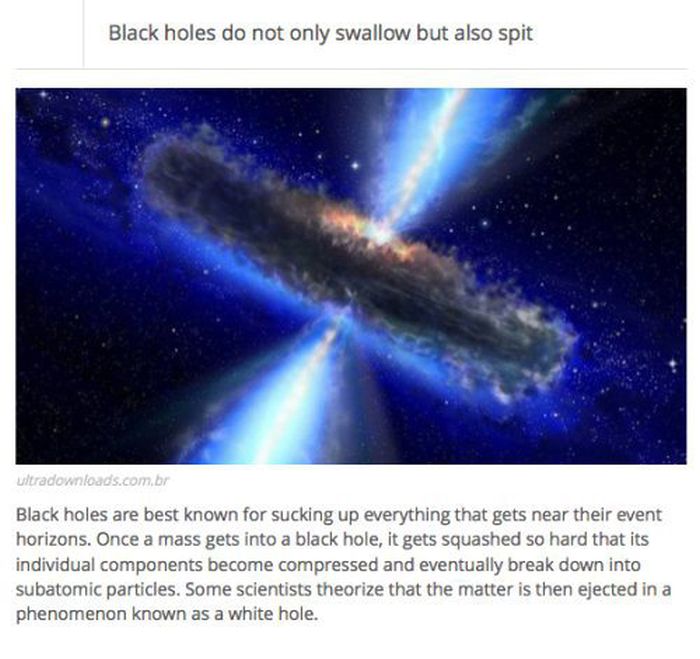
That’s because we know the first active galaxies - which must have been powered by central black holes – were formed very early in the life of the universe. Occasionally pairs of black holes crash into each other and merge to produce a single, larger black hole and we know that from the evidence of gravitational waves, which have been observed on a regular basis since they were first discovered in 2015.īut accretion and mergers, while undoubtedly part of the solution, aren’t enough in themselves to explain the observational evidence for supermassive black holes. – Black dwarf stars: The (theoretical) end of stellar evolutionĪlthough they may not be the rapacious predators portrayed in sci-fi, we know that some black holes do absorb new material and that’s what’s going on in the accretion disks of active galaxies, for example. – White holes: What we know about black holes' neglected twins – What happens at the center of a black hole? But if a black hole is incapable of sucking in distant matter, how does it ever grow to supermassive size? At present no one knows the answer to this, although there are several promising theories. At larger distances, however, a black hole’s gravity is perfectly normal. So it’s possible for an orbiting object to stray into a region where gravity becomes incredibly strong. Their exceptional nature comes from the fact that they’re super-condensed and the force of gravity increases as distance decreases.

But real black holes don’t suck matter in like this they merely attract it with the same law of gravity as a normal object of the same mass. If that was how real black holes worked, there’d be no mystery as to where the supermassive kind came from: once an "ordinary" black hole had formed from stellar collapse, it would simply grow and grow until it reached enormous size. Movies often portray black holes as giant cosmic vacuum cleaners, relentlessly sucking in other material until there’s nothing left. The ominous shadow of the galaxy’s 6.5 billion solar mass black hole is clearly visible, quite literally as a "black hole" at the center of the disk. In 2019 the Event Horizon Telescope succeeded in photographing one such galaxy - Messier 87 - producing a direct image of the accretion disc. In the process, it releases enormous amounts of energy, sometimes even outshining the rest of the galaxy. When surrounded by a swirling "accretion disk" of rapidly rotating gas and dust, matter is constantly spiralling down into the black hole. In an active galaxy, however, the supermassive black hole behaves a lot differently. Rather than devouring anything that ventures too close to them, the black holes at the centers of most galaxies only give away their existence through subtle effects on nearby stars.


Frustratingly, its exact location continues to elude detection. This cluster of galaxies is estimated to have a black hole of up to 100 billion solar masses near its center.


 0 kommentar(er)
0 kommentar(er)
